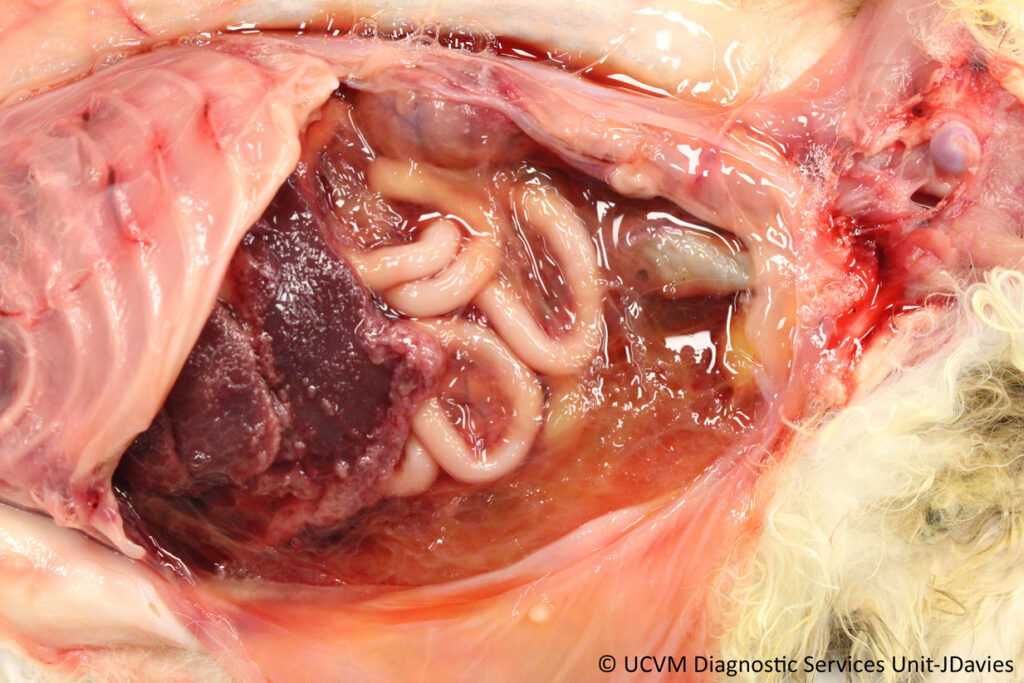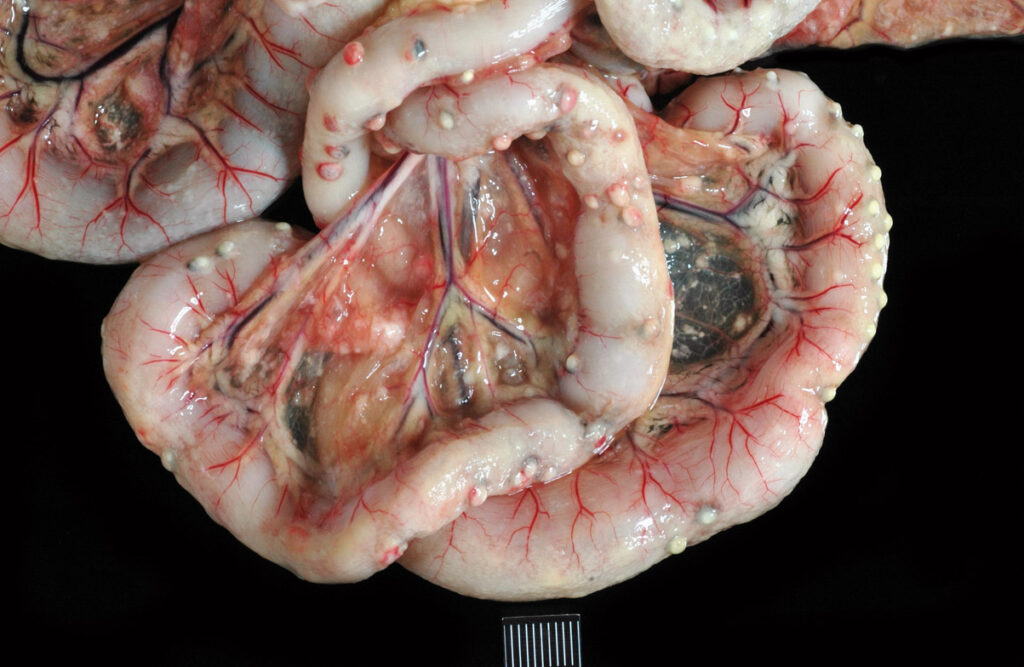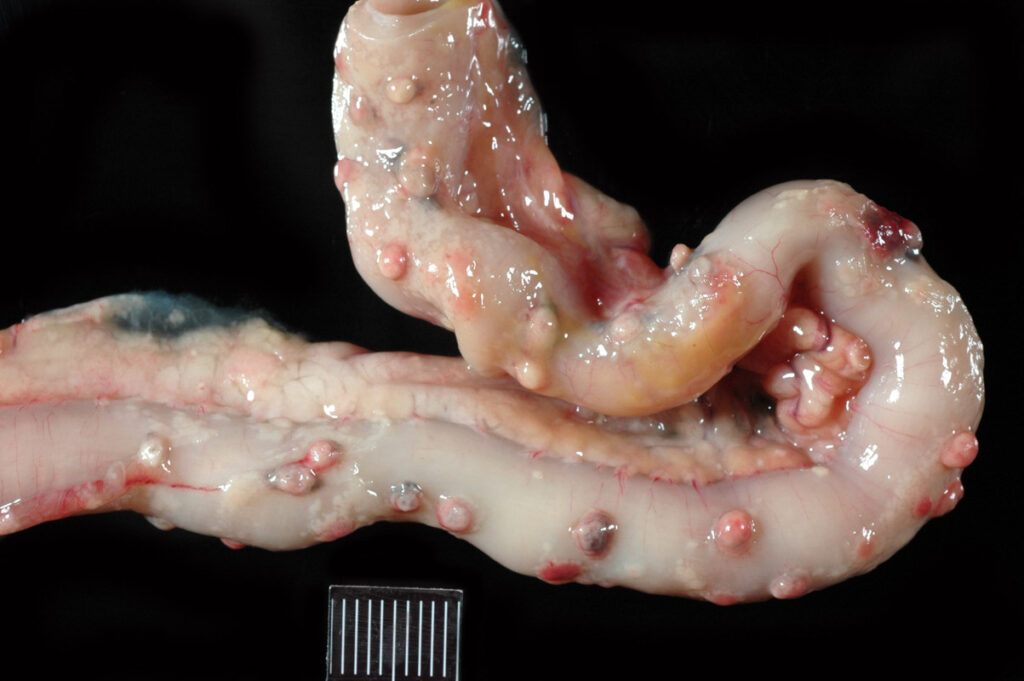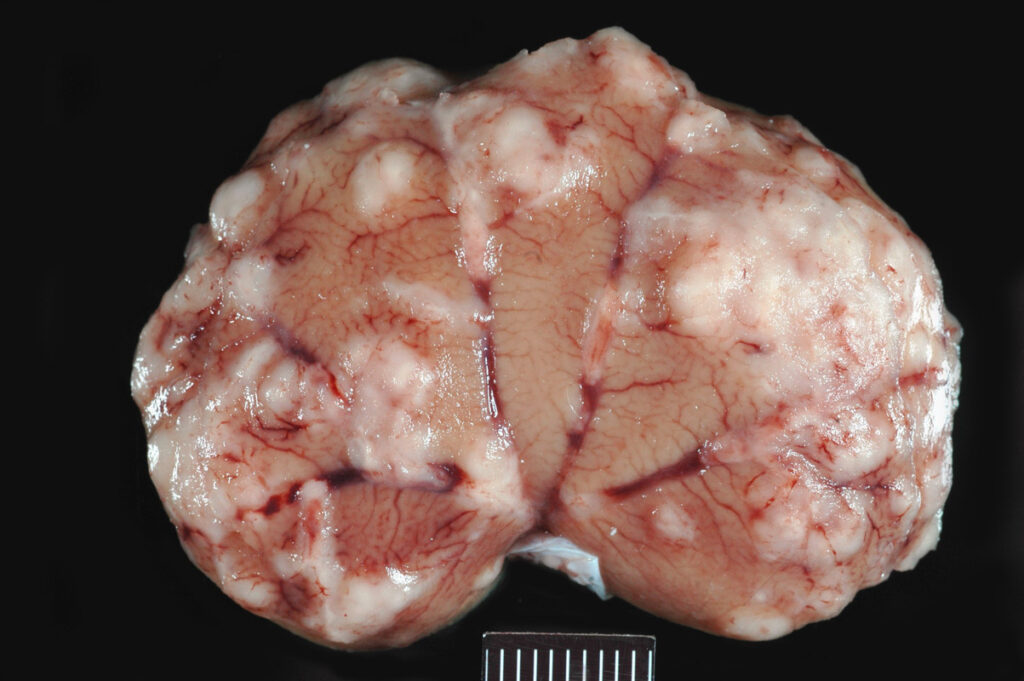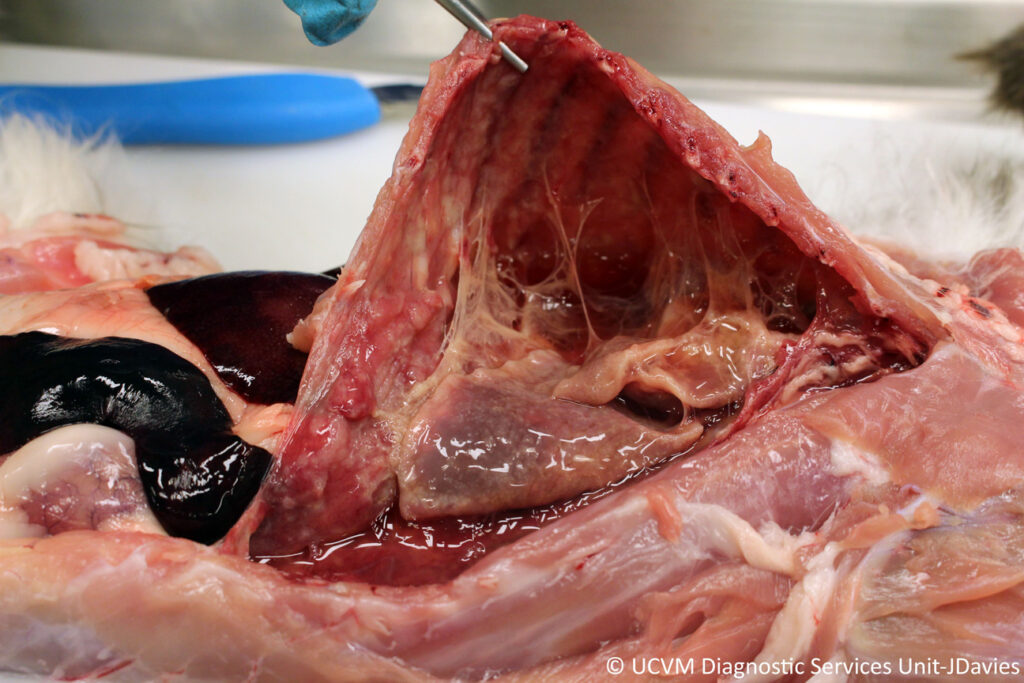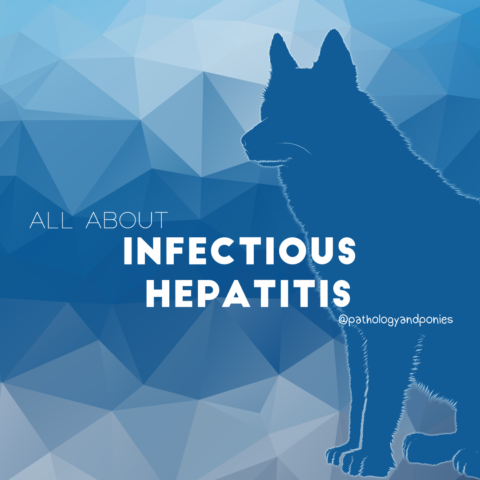Today’s path rounds is on 𝐟𝐞𝐥𝐢𝐧𝐞 𝐢𝐧𝐟𝐞𝐜𝐭𝐢𝐨𝐮𝐬 𝐩𝐞𝐫𝐢𝐭𝐨𝐧𝐢𝐭𝐢𝐬 (FIP)! This was a suggestion ![]()
𝐖𝐡𝐚𝐭 𝐢𝐬 𝐢𝐭?
FIP is a viral infection of cats that is characterized by 𝐯𝐚𝐬𝐜𝐮𝐥𝐢𝐭𝐢𝐬 (leaky vessels) and inflammation. It has two forms, 𝐞𝐟𝐟𝐮𝐬𝐢𝐯𝐞/𝐰𝐞𝐭, where excess fluid accumulates in the body cavities, and 𝐧𝐨𝐧-𝐞𝐟𝐟𝐮𝐬𝐢𝐯𝐞/𝐝𝐫𝐲, where the inflammation forms distinct nodules.
𝐖𝐡𝐨 𝐠𝐞𝐭𝐬 𝐢𝐭?
This is a disease unique to cats! Typically young, intact male cats get this condition.
𝐖𝐡𝐚𝐭 𝐜𝐚𝐮𝐬𝐞𝐬 𝐅𝐈𝐏?
FIP is caused by a 𝐜𝐨𝐫𝐨𝐧𝐚𝐯𝐢𝐫𝐮𝐬 (but not *that* coronavirus), and follows a somewhat interesting path of development. Feline coronavirus is extremely common in cats. Cats acquire the virus through ingestion of food contaminated with feces from infected cats. From there, it invades into the intestinal cells and sets up shop, producing more virus and releasing it into the feces. Up to 90% of cats with feline coronavirus have no ill effects or clinical signs from the disease, and carry on their mischievous lives quite happily.
However, in about 5% of cats, the virus undergoes a mutation that allows it to leave the intestinal cells and enter 𝐦𝐚𝐜𝐫𝐨𝐩𝐡𝐚𝐠𝐞𝐬 (the immune system’s major clean-up cell) and replicate there. Because macrophages are found in all body tissues, this allows the virus to spread widely throughout the cat.
So why is this particularly interesting? Because of the life cycle of coronavirus, this means that the mutated coronavirus that causes FIP is not actually infectious to other cats, because it can’t be shed in the feces. Neat!
𝐖𝐡𝐚𝐭 𝐝𝐞𝐜𝐢𝐝𝐞𝐬 𝐰𝐡𝐞𝐭𝐡𝐞𝐫 𝐚 𝐜𝐚𝐭 𝐠𝐞𝐭𝐬 𝐰𝐞𝐭 𝐨𝐫 𝐝𝐫𝐲 𝐅𝐈𝐏?
FIP is very responsive to the immune response the body produces against it! If the immune system is operating at full capacity, then the cat likely will resist the virus and not develop any clinical signs. If the immune system has a significant deficiency, the virus will continue to run rampant throughout the body and cause the more severe form of FIP, wet form. The dry form falls somewhere in between those two outcomes, with a partial immune response leaving only a few infected cells that develop into nodules.
𝐖𝐡𝐲 𝐢𝐬 𝐭𝐡𝐢𝐬 𝐚 𝐩𝐫𝐨𝐛𝐥𝐞𝐦?
As mentioned above, FIP’s primary problems are vasculitis and inflammation. In the wet form, the leaky vessels cause fluid to build up in the body cavities like the abdomen, chest and in the pericardial sac around the heart. This fluid typically has 𝐟𝐢𝐛𝐫𝐢𝐧 in it, a component of the blood that helps form clots. When it is loose in a body cavity, it interacts with the surfaces of organs and forms long strands attached to surfaces and floating free in the fluid. Gross. The fibrin strands and fluid can prevent organs from working properly, most notably the lungs. Lungs do not like to expand when surrounded by fluid!
In the dry form, inflammation is the primary problem, causing formation of inflammatory nodules within and on the surface of organs. These nodules take up space in the organ causing reduced organ function, and if they enter the brain, can even cause neurologic signs and blindness!
𝐇𝐨𝐰 𝐢𝐬 𝐢𝐭 𝐝𝐢𝐚𝐠𝐧𝐨𝐬𝐞𝐝?
The clinical signs are highly variable, because it depends on which organs or body areas are affected. However, fever and weight loss are fairly common non-specific findings. Veterinarians may use ultrasound to try and identify free fluid in the body cavities in the wet form, or to try and find the nodules of the dry form. The veterinarian can also run bloodwork to look for abnormalities or even take a sample of the free fluid to help diagnose the disease.
𝐇𝐨𝐰 𝐢𝐬 𝐢𝐭 𝐭𝐫𝐞𝐚𝐭𝐞𝐝?
Unfortunately, FIP has no definitive treatment, and has a very poor prognosis. One study showed that the median survival time after diagnosis was just 9 days! Most treatments attempt to control the inflammation and vasculitis, however they are often not very effective. Currently, there are several antiviral treatments that are being tested, with some reasonable results!
𝐏𝐡𝐨𝐭𝐨𝐬
1) The abdomen of a cat with wet form FIP, showing abdominal fluid and stringy strands of fibrin.
2-3) FIP nodules over the intestines.
4) FIP nodules on the kidney.
5) Remember how fibrin forms long stringy strands? Here are fibrin strands running between the lungs and the ribcage… nasty!
6) Some extremely sad lungs covered with fibrin strands and sitting in fluid in wet form FIP.
𝐒𝐨𝐮𝐫𝐜𝐞𝐬
Maxie, G. Jubb, Kennedy and Palmer’s Pathology of Domestic Animals, Volume 2. Sixth Edition.
Levy, J.K. Overview of Feline Infectious Peritonitis. Merck Veterinary Manual 2014.
Photos 2-4 courtesy of Noah’s Arkive.
Photos 1, 5 and 6 courtesy of University of Calgary Diagnostic Services Unit.

